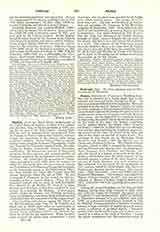

Padilla, JUAN DE, Friar Minor, protomartyr of the United States of America, member of the Andalusian province, came to Mexico probably in 1528, joining the province of the Holy Gospel. During 1529-1531 he, with an unnamed friar, accompanied Nuño de Guzman to Nueva Galicia and Culiacan, and prevented the oppression of the natives while acting as military chaplain. From 1531 to 1540 he made missionary tours among the Indians of Tlamatzolàn, Tuchpàn, Tzapotitlàn, Totlamàn, Amula, Caulàn, Xicotlàn, Avalos or Zaolàn, Amacuecàn, Atoyac, Tzacoalco, and Colima. He founded the convent of Tzapotlàn, becoming its first superior, and erected another at Tuchpan, making it the headquarters for the missionary friars. He established the monastery of Tulant-cingo, governing it until 1540, when he resigned to follow Fr. Marcos de Niza, the discoverer of Arizona and New Mexico, with Francisco Vàsquez de Coronado, on the memorable march to the fabled Seven Cities, and thus reached the Upper Rio Grande near the present Bernalillo about the end of 1540. He also accompanied Coronado in his search to Quivira, probably as far as central Kansas. When the disappointed general and his army in 1542 abandoned New Mexico, Fr. de Padilla, Fr. Juan de la Cruz, Brother Luis de Ubeda or Escalona, resolved to stay behind to evangelize the Indians. A Portuguese soldier, Andres da Campo, two Mexican tertiaries, Lucas and Sebastian, two other Mexican Indians, and a half-breed boy also remained with the zealous friars.
After working with success among the Tíguez on the Rio Grande for some time, Fr. de Padilla’s zeal urged him to afford other tribes an opportunity of knowing and serving Christ. Accompanied by Da Campo, Lucas, Sebastian, and the two Mexican Indians, he set out for the northeast. When the little party reached the plains, they encountered a band of savages, who attacked them and slew Fr. de Padilla as he calmly knelt in prayer. The savages threw the body into a pit. The date and locality of his martyrdom are uncertain, Fr. Vetancurt in his Menologio assigning November 30, 1544. Some believe he perished in eastern Colorado, or western Kansas, but this is conjecture. The story, believed in New Mexico, that his body was discovered by Pueblo Indians, brought to Isleta, interred beneath the sanctuary of the church, and that it rises and falls at stated periods is a myth. The remains of the Franciscan buried there are doubtless those of Fr. Juan José de Padilla, who died a peaceful death there two centuries later. Fr. de la Cruz and Brother de Ubeda were likewise put to death at the instigation of Indian sorcerers at the missions on the Rio Grande.
ZEPHYRIN ENGELHARDT

